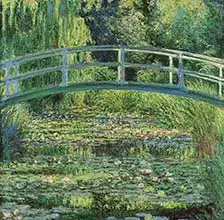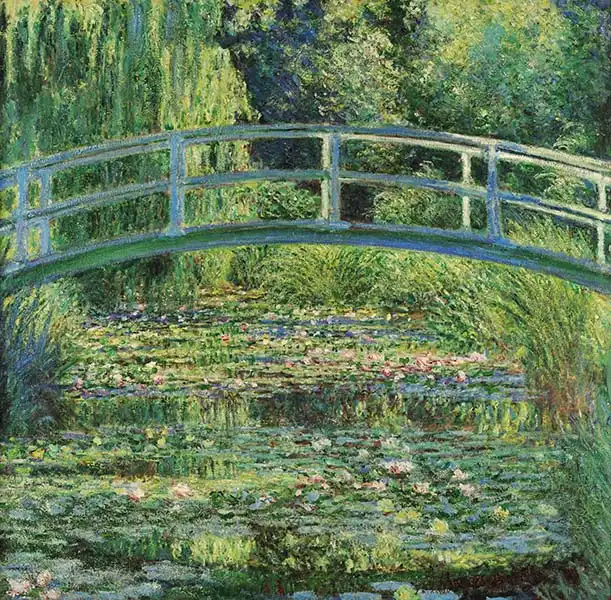About this finishing
Print. The image is printed on the top quality 10-ink HP Z9PS printer on HP matte 270 g / m2 paper. You can choose any size to an accuracy of 1 cm. A margin of 5 cm around the image is added to the size of the motif.


You can find a detailed description about our finishings
here.
Japanese bridge
Date:
1899Medium:
oil on canvasLocation:
National Gallery of Art, Washington, USADimensions:
101.6 x 81.3The
impressionist painting from 1899 is one of the first works in a series of paintings centered on a Japanese bridge and a pond covered with
waterlillies from 1895 to 1926. The paintings become more abstract over time, their contours lose their sharpness and any sense of detail disappears. The garden, whose artistic treatment
Claude Monet was practically obsessed with, was built by the painter himself. He himself chose various flowers, created a pond and planted water lilies. In 1895, he incorporated a Japanese-style wooden bridge into the magical environment, which served as a source of inspiration for many years.
Monet painted picture Japanese bridge in 1899. Prevailing color of this fine art print is green and its shape is square. Original size is 101.6 x 81.3. This art piece is located in National Gallery of Art, Washington, USA. This image is printed on demand - you can choose material, size and finishing.
Claude Oscar Monet (1840-1926). A native Parisian, who thoroughly developed the idea of
Impressionism. Monet almost scientifically studied the effect of light on different objects. He devoted himself to so called transitory states, which quickly led him to work with colour and light, his paintings acting on the viewer from the first impression. His use of open-air painting and objects which were special only because of light opened the way for the beginnings of modern painting. Monet’s
Impression, Sunrise (1874) not only gave the name to the whole art movement, but secured Monet a place among the best painters of all times. At one time, he resided in London and created his famous study
Houses of Parliament (Monet wondered, How could the English painters paint Parliament when it cannot be seen for the fog?). In the
Giverny, which became his favourite retreat after the death of his wife, he painted motifs from his garden and the popular series
Water Lilies - the world of the water was as poetic and mysterious as a primordial paradise.


